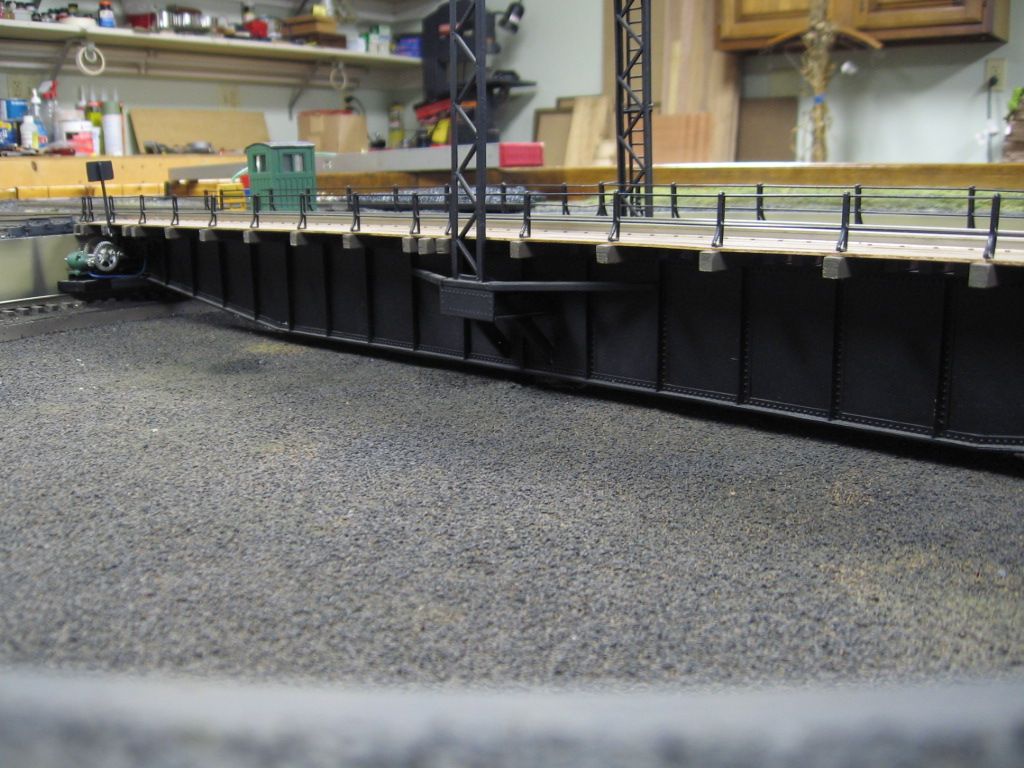I thought there may be some interest in the history of my Bowser turntable now in it's 22nd year!
In November of 1996 I purchased a Bowser 22" turntable with the motorizing kit as well as their bridge girder kit.
July, 2004: A couple of gears needed to be replaced. I also installed a Lionel TMCC Accessory Motor Controller (AMC) enabling cab 1 control - this was a great improvement! I also installed Bowser's upgraded "Bogies" (wheels that the turntable rides on) which was also another great improvement.
October, 2006: Bowser came out with an improved drive wheel shaft clamp that made securing the drive wheel to the drive shaft much better.
September, 2007: Bowser came out with an improved motorizing kit which made another big improvement to the operation of the turntable - 2 can driver motors plus an idler box (roller) for much smoother operation.
At this point, all worked very well and the turntable, now in it's third home worked very well. It survived the move from PA to CA in 2014.
Recently, one of the drive motors failed. I somehow managed to get it working again, but a few weeks later it quit.
Remembering that Millhouse Studios (Alan Zamorski) had a turntable drive upgrade kit available, I contacted him and ordered the new kit.
The kit was very easy to install and now my turntable works better that ever!



































 Bowser Pit rail boggies were not position to roll smoothly on the pit ring.
Bowser Pit rail boggies were not position to roll smoothly on the pit ring.  I could understand the clamps swelling and reducing the ID of the shaft holes, since they seem to have been zinc, but the 5/16" brass shaft and matching steel bushing shouldn't change. Right now my plan is to make new shaft to table/disc clamps out of aluminum, drill through them and the new 5/16" shaft (aluminum preferred over steel for ease of drilling), and use roll pins.
I could understand the clamps swelling and reducing the ID of the shaft holes, since they seem to have been zinc, but the 5/16" brass shaft and matching steel bushing shouldn't change. Right now my plan is to make new shaft to table/disc clamps out of aluminum, drill through them and the new 5/16" shaft (aluminum preferred over steel for ease of drilling), and use roll pins. 

